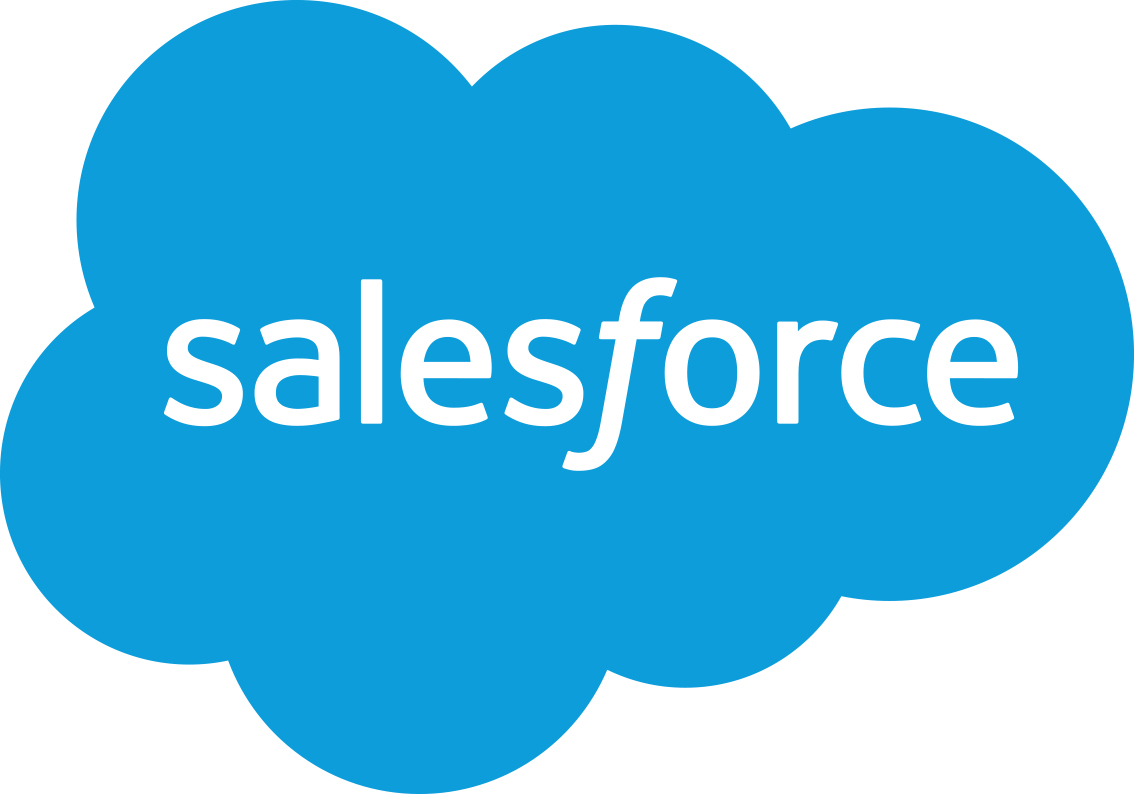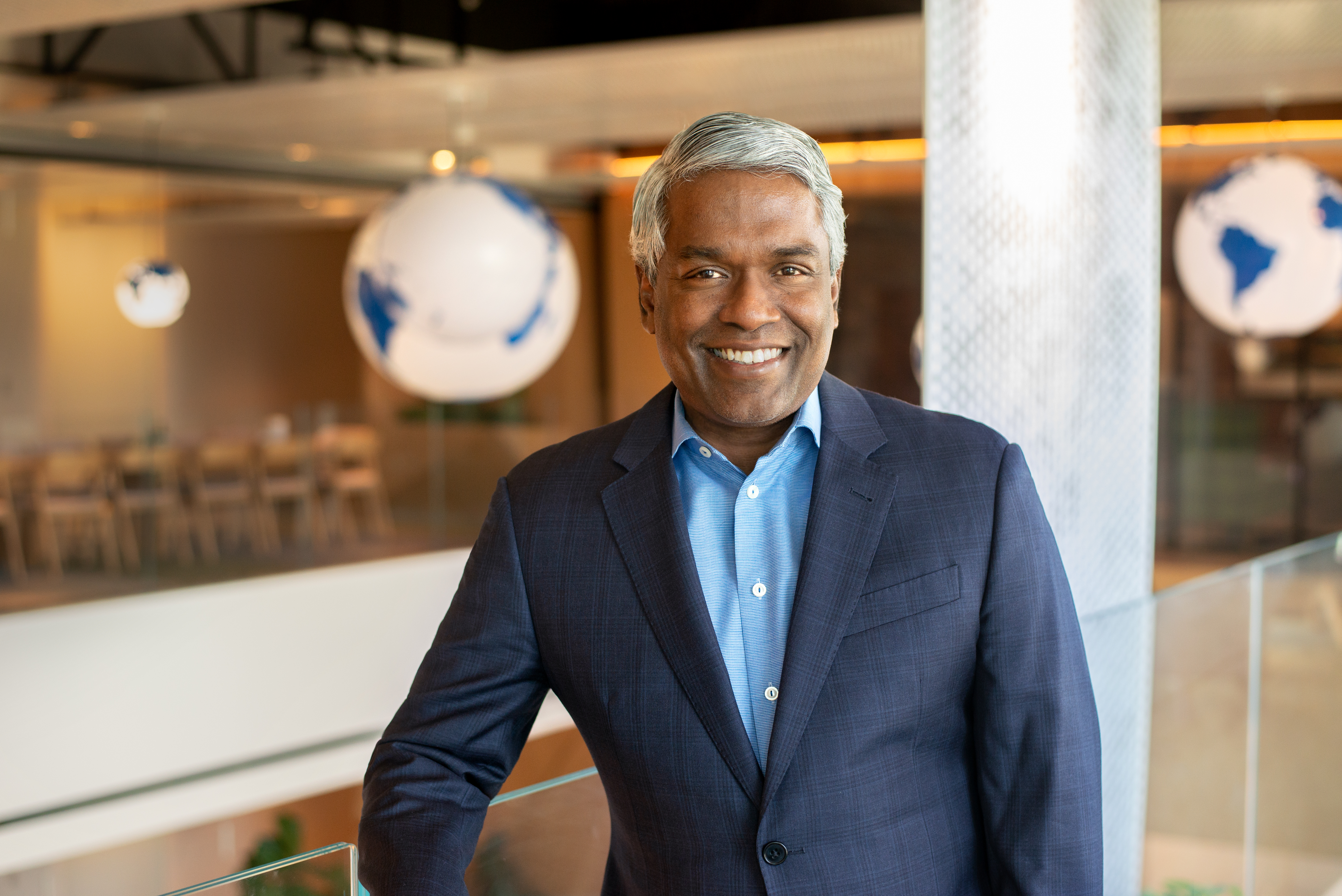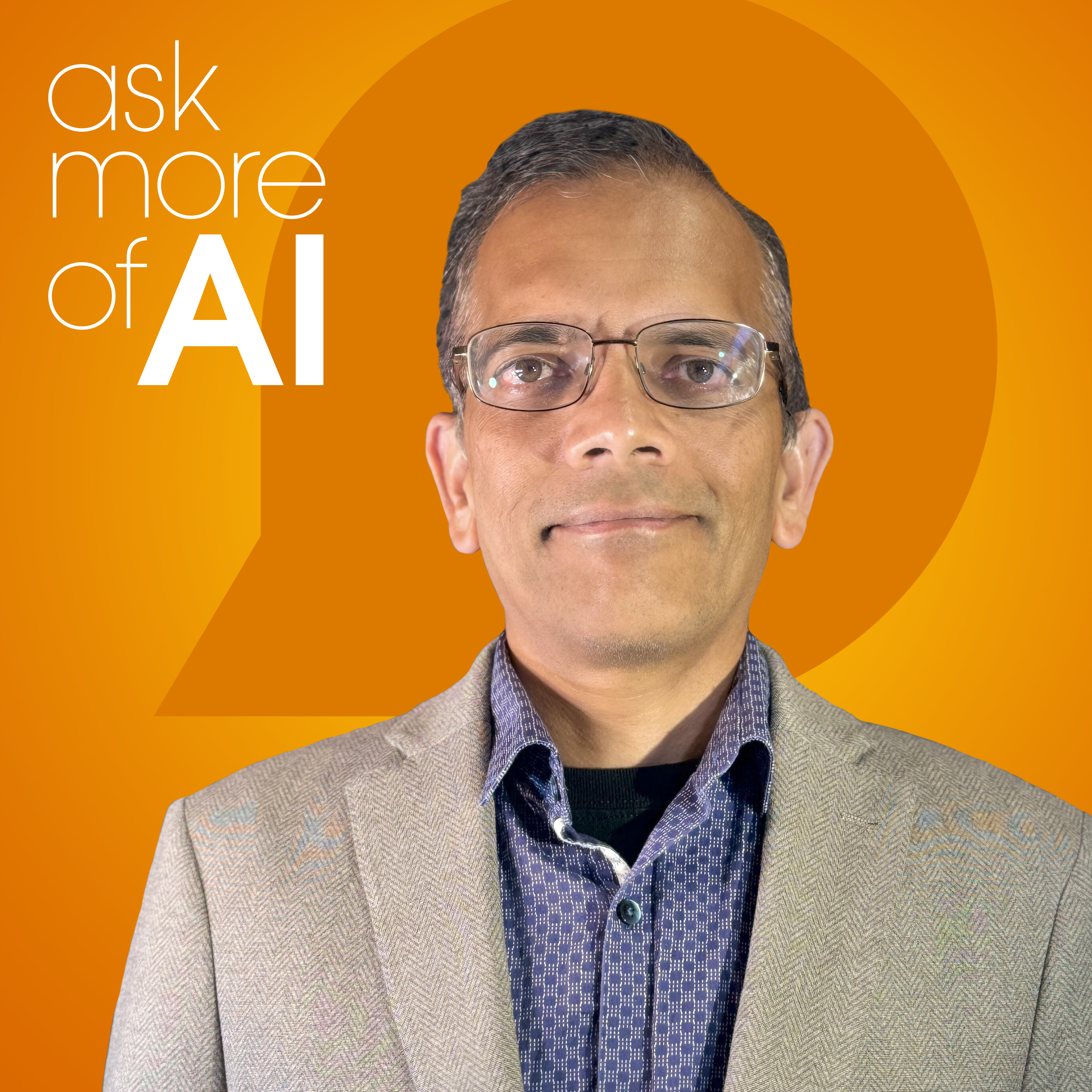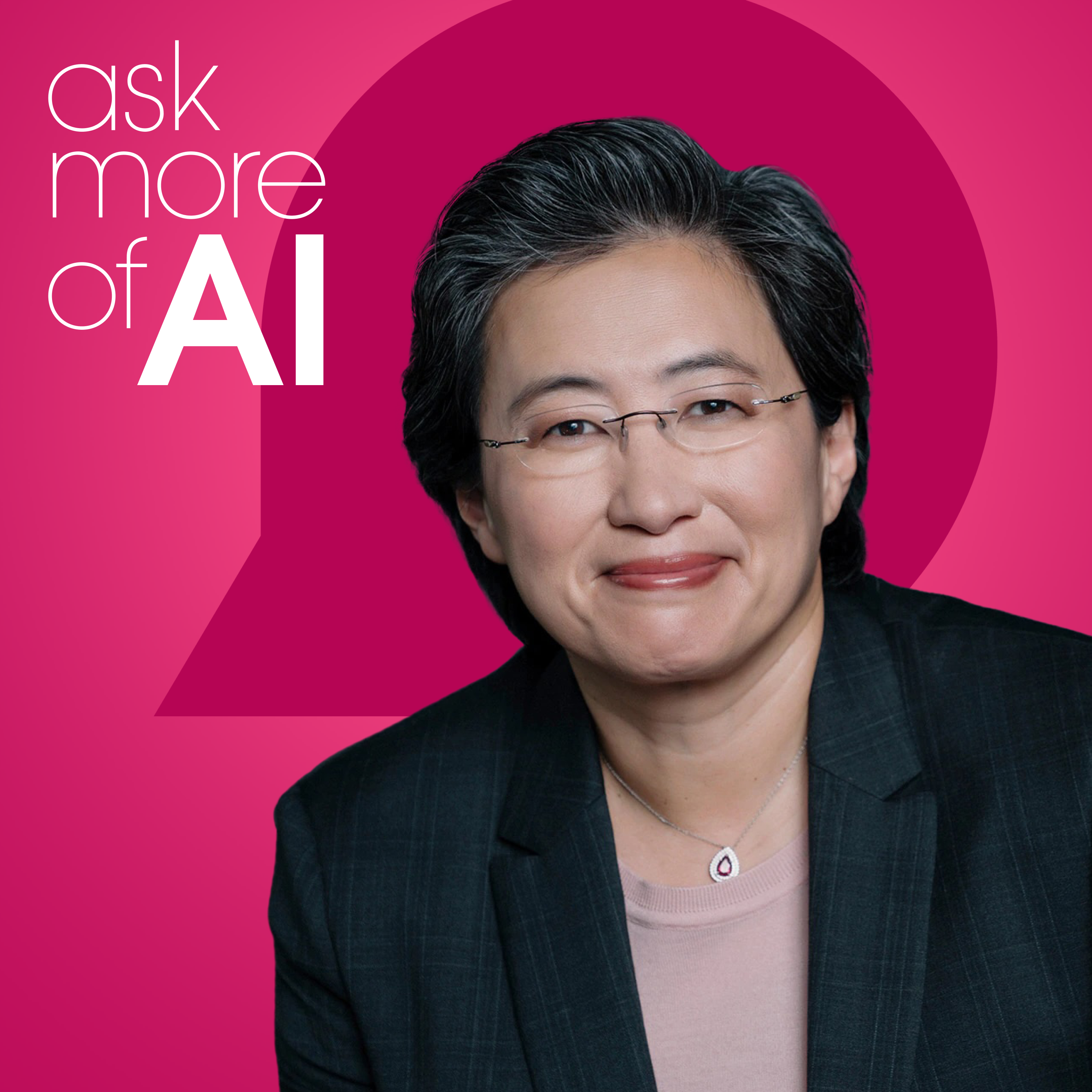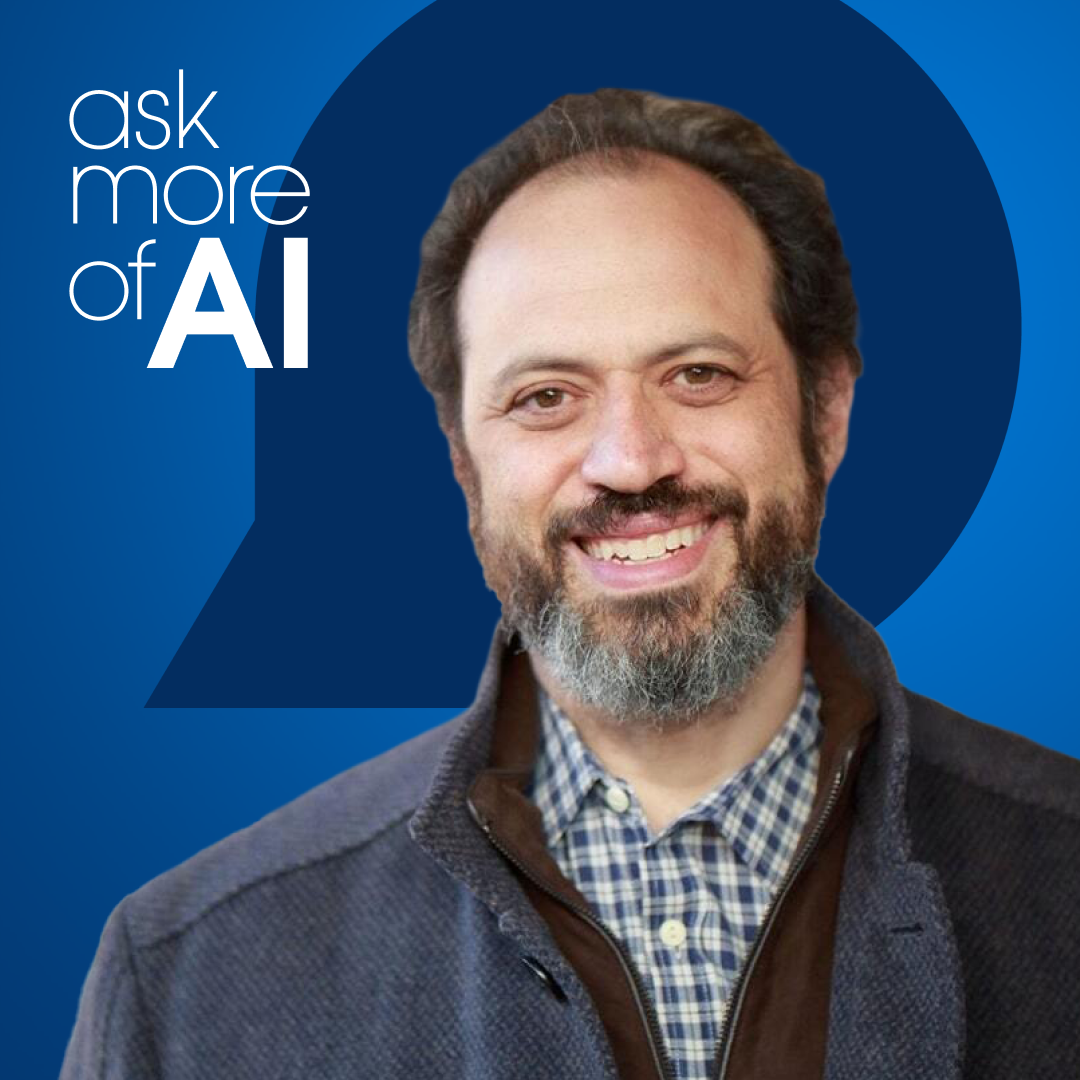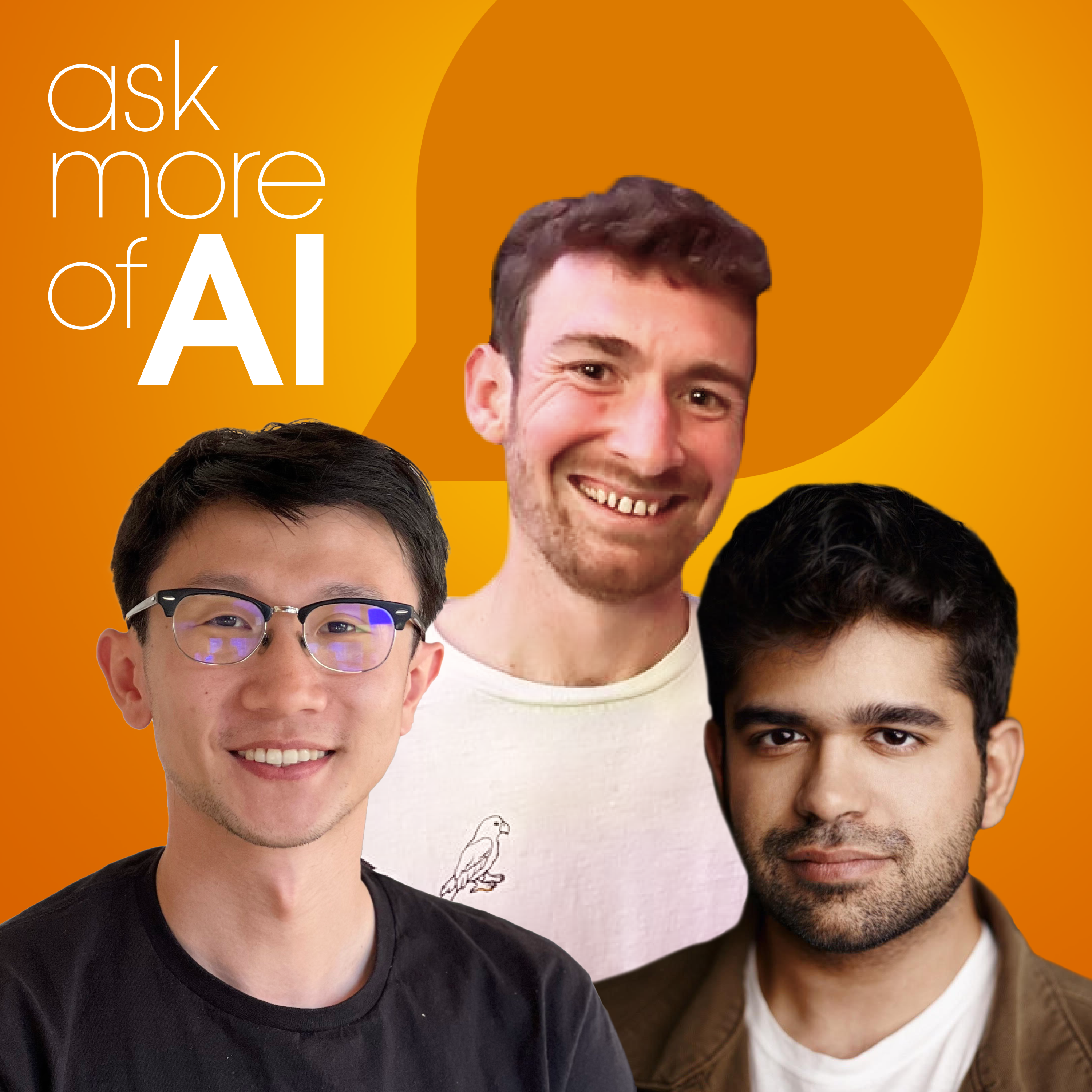"All You Need" to Succeed With AI feat. Google's Thomas Kurian
- 0.5
- 1
- 1.25
- 1.5
- 1.75
- 2
Thomas Kurian: All right. Google AI has really been about making technology even easier for people to use, the capability of agents to understand and have the skills of humans and interact with computer systems. For us, that's the next evolution of simplifying technology for people to adopt.
Clara Shih: Welcome to Ask More of AI, a podcast looking at the intersection of AI in business. I'm Clara Shih, CEO of Salesforce AI, and today, I'm thrilled to be here with Thomas Kurian, CEO of Google Cloud. Thomas, so great to have you on the podcast.
Thomas Kurian: Nice to be here, Clara. Thanks for having me.
Clara Shih: And this is so great too, just on the heels of us announcing our expanded partnership between Google Workspace and Salesforce, just so much opportunity ahead.
Thomas Kurian: That's right. inaudible exciting times.
Clara Shih: You have so many brilliant AI researchers and data scientists and machine learning engineers at Google. I mean, literally thousands of them, so many Ph. D. s. How does Google Cloud as an organization, how do you partner with the other parts of Google to figure out what to bring to market and what to make available?
Thomas Kurian: We work extremely closely with Google DeepMind and our research team, and essentially, we're doing four key things with them. The first one is the infrastructure that we use internally and the large- scale computing systems we use internally to train and serve our models. The second is every model that Demis and our team at Google DeepMind build, we're making available to customers through our Vertex developer platform, and that makes it... we get two advantages from that. One is the state- of- the- art models are available concurrently now to enterprise customers. We're also able to see what enterprises want from these models and actually improve the skills of the models in many ways. So that's the second piece, making the models available. Third, we're also integrating it into our platforms. When we look at the work we're doing, we're doing two important things. One is the work we're doing with Vertex, which is targeted to developers who are building applications. The other one is the work we're doing with Duet, which is our end user- facing experiences. And so we're taking each of our products and developing an end- user persona, whether it's a developer, an analyst, a cybersecurity professional, as somebody who wants a graphics artist to help them, et cetera. And we're building these personas. Finally, we are working with the ecosystem because we recognize that enterprises and companies and governments, when they think about picking up a platform, like, for example, the Google DeepMind models, they want to make sure it works in concert, not just with our systems but with Salesforce and with other systems. And so the work we're doing with your team is actually bringing our expertise in Google DeepMind, but through the partnership we have with you to customers.
Clara Shih: Well, I was just catching up on the many, many announcements that have been coming out from Google really before the next conference, but even just from the next conference, there were so many innovations. I mean, how do you... as you talk to customers from all around the world and in different sectors and different industries, what do you find is resonating the most, and where should companies start?
Thomas Kurian: At the macro level, if you look at what we are doing with generative AI is we're building a system that has all the skills that human beings have, and models are evolving to have all the skills that humans do. The way that we see companies adopting it is to find a domain and find what skill you need as a digital representation to then assist a human in doing that task. And it can be either externally facing or it can also be internally facing. Internally facing, for example, we've helped Home Depot with their help desk automating questions that employees have about benefits and IT like password resets and many of those tasks. We've helped Vodafone in their supply chain, being able to summarize contracts they have with their suppliers and being able to plan supply chain activities better. So it's not just externally facing but also internally facing.
Clara Shih: Yeah, that makes a lot of sense, and it resonates with what we're hearing as well. So you go into these customers, many of them are already using Google Cloud, many of the services, Google Workspace, everyone uses Google Search. What do you typically find are the missing steps for companies to be able to roll out an internal help desk or a digital banker?
Thomas Kurian: Three or four things. First one, they need to get reasonable data cleanliness because if your data is not well organized and if it is not clean, you typically have a model trying to train on that data, and the quality of the results won't be great. So getting your data organized. Secondly, you can extract information so that, for example, you can use... In our world, we have a platform called Vertex, which is the thing that developers use to build applications. And as part of it, we have a capability called Search, and we have a capability called Extensions. And Search is obviously retrieving information and organizing it.
Clara Shih: Something that you might-
Thomas Kurian: And then second-
Clara Shih: ... knowa little thing or two about.
Thomas Kurian: inaudible. And then the second is Extensions are a way for a model to take actions on behalf of a person in a system. You needed a capability called Embeddings, which is essentially a way of taking structured data or unstructured creating vector out of it, and making it accessible to a model. And there are technologies and tools available to do that. And finally, to protect against and ensuring the quality of the answers because, as you know, models tend to hallucinate. You also need capabilities like Grounding. And so these are all things that people need. Some people want to tune a model for their data. It's called fine- tuning. And we put all of these services into a developer platform called Vertex and make it available to people.
Clara Shih: And it's just so exciting. We love partnering with you and Vertex. And just think about the decades of AI research and data excellence that have gone into making Google such a successful company. And now, you opening that up to partners like us and to customers. It's incredibly powerful.
Thomas Kurian: Yeah, we're super excited because when we look at the environment that most companies have, they need partnerships like the one between Google and Salesforce to make it easy. Think about, I'm a salesperson, and I'm writing a letter to a customer or prospect. I need the data in Salesforce that tells me what the opportunity is and making it easy for people to get the information from Salesforce into that letter. Or if you're in the call center and you are responding from Service Cloud to a response to customer, you may want to synthesize some information from all the... their discussions you've had with the customer about the issue. All those are capabilities that, by making our products work well together, we're trying to make it much more seamless for users so that they can use AI but seamlessly as part of their day- to- day work. And we really welcome the partnership with you, Clara, and the team at Salesforce to make that possible.
Clara Shih: It is really exciting, and that's what I'm hearing from our customers too is just they spend so much of their day either in Google, right, searching, sending emails, setting up calendar appointments, or they're in Salesforce. And for those to come together both from a cohesive UI standpoint, but also to be able to close the loop. When that sales email goes out, did it result in a meeting getting set up in Google Calendar? Did the customer service interaction result in a sales opportunity closing because the customer is so satisfied?
Thomas Kurian: Exactly. And as we look forward, and the skills of these models are getting better and better. For example, models will be soon able to help you plan things, which is not just answering a question but plan a many step activity because humans today think about planning and managing projects and things like that as a natural part of their... of the way we all work. As models get richer and more capable, those things will build on this foundation that we have built connecting our products together.
Clara Shih: Yeah, it's really exciting to see each of the steps that you described. I'm seeing a lot of customers now choosing to connect their Google bigquery data lake with their Salesforce data cloud. So then they've got all of their structured and unstructured data, all of the data sharing rules and permissions, and then working together for us to vectorize that data, help drive hybrid search, and be able to start activating that both for the content generation but also as you said, as we move into planning and actioning and decisioning.
Thomas Kurian: Yeah, super exciting, and the easier we make it for people. I always say if you think about the internet, there are billions and billions of websites on the internet. Today, we are so used to going to the search box and typing a question and then navigating from there to the website. We don't type in IP addresses, hostnames, routing IDs. That's all happening underneath the covers. But the search experience has made it so accessible. And our hope through the work we're doing with you is to make it much easier for people to use the strength of the model but be able to talk to it through an extremely natural interface like chat or conversations, but using additional modalities and then evolving that across their workflow so that they're not having to go to eight different tools to do the work. And so it's the next phase of evolution in the way that people interact with computer systems. Even a mundane thing today, we talk about multimodality, but most people work at any one time in a single modality. And when I say that, they're either talking in chat or asking a question with an image and that's not the way that human beings see or think. And so we're seeing even those areas now, the capabilities of models evolving to do so that you can interact much more naturally with systems and not have to deal with the artificial limitations that systems have had.
Clara Shih: That's true. Instead of having to collapse down into one dimension, right, we can really make the multisensory.
Thomas Kurian: That's right. I mean, I often think about how many people remember a song and the name... I'm terrible with my... memorizing the band name or the song name. I can more hum a tune. And being able to say, " What was that song after that one on the record that's using, for example, auditory or image or other types of input?" And just making it much more natural the way that human beings, if I would talk to my family and hum a tune, they say, " Dad, you're humming it really badly, but here's what you are trying to say." And that's the kind of thing that computer systems don't do today, but soon will be able to.
Clara Shih: In terms of some of the examples that you shared earlier, right, retailers, for example. As retailers go into this, they got to get their data house in order. They have to make sure that easily... it's unified, it's harmonized, it's indexed and usable. At what point does it make sense to fine- tune with data versus use augmented generation?
Thomas Kurian: It's a great question. There's many things. I can just give you an example of what we're doing with retailers. So retailers just starting with e- commerce. So e- commerce, you want to frankly really improve conversion rate. And when I say conversion rate, people searching for your product, making it easy to discover and then be able to access and find your product. So the first thing that people do is say, " I've got a large catalog of products. How accurate are the descriptions of it?" Because the descriptions are not great, people aren't going to find it. So models can now... you can feed a model an image, and it can generate the description. As a merchandising manager, you can then optimize the description. So that's step one. Step two, then you can make it accessible through search so that it's easily discovered, and you can make it accessible not just with textual search, but for example, some people say, " I saw this sweater on somebody. Can you find me whether you have that one or something like it?"
Clara Shih: Yes.
Thomas Kurian: And they can give you an image of somebody wearing it. So that's a multimodal. The third thing could be, " Hey, in addition to that, can you tell me what are the additional products that would best accessorize it?" Most people call it recommendations, but today, recommendations are relatively, I would say, crude. I mean, they're using rules. People who use this may wear that. So these are all examples of things how we don't see the steps in using it as one step, but you can iteratively get better. Now, four areas where we've seen fine- tuning particularly work well is if it's a data set that is truly unique to you.
Clara Shih: So for companies that do want to fine- tune their own custom models, you have a pretty unique approach that is cost- effective and just more accessible for companies to be able to do that. Can you talk about it?
Thomas Kurian: So how do you make a model really be efficient in fine- tuning but with a lot less data? So, as an example, if you're a hospital and you're dealing with rare diseases because it's rare disease, you don't have a lot of data. So how can you then train a model to be very accurate in understanding rare disease information? So we've invented a technique called LoRA, lower- rank adaptation. Lot less data, but it can give you very high- quality results. And these are all ways that we see things making improvements in the way that models fundamentally work.
Clara Shih: It's really incredible, right, because I think a lot of companies want to do the fine- tuning either because there's not a lot of data available or just simply for cost reasons, and it's very-
Thomas Kurian: That's right.
Clara Shih: ... cleverto freeze most of the model weights and just tune the outer layers. And so, I'm just curious. Are customers having success with LoRA, and how is it different than more expensive fine- tuning methods?
Thomas Kurian: We are seeing a lot of customers really doing two important patterns. One is where they're starting for cost and effectiveness reasons to train a certain size model and fine- tune it. It helps them lower their cost, it improves accuracy, it also improves latency, it reduces latency in response, but they also have an orchestration system, and we have one where they can orchestrate a larger model in case this fine-tune model does not have all the answers because it can be more accurate in one area, but it may not be as general purpose as a larger model that they can fall back to a larger model. And that's a pattern we see a lot of customers now adopting. Now, when you look at LoRA, for example, we've seen really good results from customers using it. The biggest thing that we see is that you need a lot less data to really tune the model. And the benefit of that is you can really focus on making sure the data that you're using to fine- tune using LoRA is much higher quality data. So it's not just the fact that you need less data is the fact that because the technique allows you to get high- quality optimization and tuning, you need also... you can feed it a lot less but much higher quality data and, as a result, your sensitivity from the model in improvement is quality is much higher.
Clara Shih: Higher quality, higher precision, lower cost.
Thomas Kurian: That's right.
Clara Shih: Yeah, it's really interesting. I mean, there's going to be a proliferation of models, and just for us to learn the right model for the right task, optimizing for cost, for performance, for latency, really exciting developments.
Thomas Kurian: It's also, to be frank, Clara, we've seen efficiency. I'll give you an example of a lot of people using our image model to generate images. And if you think about using it in advertising and you want to make a print ad, most companies have a certain company style to that print ad. So, in the past, to take a general image that you've generated but adapted to your company style, you need to give thousands and thousands, thousands of images, which sort of defeated the purpose in using the model to create images in advertising. Now, you can do that with a lot less.
Clara Shih: So for those examples, you just shared how many examples are needed for the fine- tuning with LoRA.
Thomas Kurian: We've seen a company do the image fine- tuning, for example, with 30 images.
Clara Shih: Incredible.
Thomas Kurian: Which from... I mean it used to be tens of thousands.
Clara Shih: Yeah. So it really just democratizes who is able to fine- tune in addition to the quality and precision that you were describing.
Thomas Kurian: Exactly. And it also personalizes when we say agents, and these AI systems are becoming agents on behalf of people. People say, " Why doesn't it take my personality, not a personality, but why doesn't it take my personality?" And if you can tune it with a lot less, you can actually make it act like you rather than like a human.
Clara Shih: Do you envision that every worker going forward will have this type of custom fine- tuned model for them?
Thomas Kurian: We do believe that people have agents that act on their behalf and act on their behalf that really represent them and the tasks that they are doing and the way they want to do the task as opposed to just a single general system. We definitely think that's the way that people want the systems to behave. It's early to say whether they will have one that does all the work that they do at home and at work. As you know, if you talk to people, they have different personalities at home and at work. And so they may have different modalities, you know, a bit different systems that represent the way they operate at work was the way they operate at home. It's early days. But we definitely think over time, as the technology gets better and better and you need less and less information to make these systems behave like individuals, we definitely think that people want a personalized agent.
Clara Shih: And let's play this out. So imagine, right, each salesperson at a company, each customer service rep at a company, they have an agent, they have an assistant. Over time, it's an agent that acts on their behalf, and then consumers, they also have an assistant becoming an agent. How do you see these interactions playing out?
Thomas Kurian: I mean, it's early days, but you inaudible just take a practical example, right. I want... I've ordered a product. I want to find out where it is. I asked my personal agent, " Hey, I've given you a calendar time that this thing was supposed to get to me, and can you just check and find out if it's going to get there and if it isn't there by that time, can you find out what's wrong?" And so your personal agent will go and do that work. It may then interact with a system. For example, it may ask Uber Eats, or it could ask UPS or pick your favorite product, what's being delivered? Hey, what's going on with this? And on the other side, instead of having a human being assist, you can have another agent respond and say, " Well, I think your package is here, and here's when it's going to get to you, and we apologize for the delay." And so those are natural interactions that we expect over time, and there will always be a role for a human because, at some point, if something's wrong and you need to have somebody really resolve the situation, for example, redirect a truck, you may need a human manager to get involved. But there's a lot of this kind of task that one agent can do on behalf of an individual talking to a company on behalf of the company.
Clara Shih: It's really interesting and exciting for both that customer service agent and also that end customer, just a lot of the mundane, annoying steps that we have to go through today. Could imagine a time in the near future where inaudible the agents can just handle for us.
Thomas Kurian: I mean, just think about the call center agent. They get a phone call. They first have to ask, " What are you calling about?" They typically then have to go to two or three systems. One is the logistics system to say, " Where is this package?" They enter a number, the logistics system says is not yet in the truck. It's in stuck in the warehouse. There's typically yet another system they have to go to. They cut and paste that tracking ID into the warehousing system to find where is that available. They then need to do an expedited order. They have to send an email to somebody saying, " Can you please expedite this?" These are all steps that have been formed because of the boundaries between these systems. And with agents and the ability to use techniques like information retrieval, embeddings to retrieve this information and then to have extensions that can do tasks on your behalf, agents can do a lot of this mundane work on behalf of people. And so it means that people will find more important and fulfilling things to do. But a lot more of these sort of day- to- day tasks can be automated using agents and the capabilities of agents as they evolve.
Clara Shih: I think back 20 years ago, right, when a lot of these tasks you described were done on a clipboard with pen and paper or with fax machines.
Thomas Kurian: inaudible.
Clara Shih: And how we spent-
Thomas Kurian: inaudible.
Clara Shih: ...the last 20 years working with customers digitizing these processes, driving automation, driving workflow across different systems. And we're at this juncture again where we're going to introduce agents to drive even better efficiency and reduce even more friction.
Thomas Kurian: That's right. And for us at Google, AI has really been about making technology even easier for people to use and even easier to adopt because now, just like navigating the internet, when we said you can put a search box, and it can help you find any information on the internet, we dramatically simplified it. This notion of agents, the capability of agents to understand and have the skills of humans and interact with computer systems, for us, that's the next evolution of simplifying technology for people to adopt.
Clara Shih: It's just really amazing how Google has opened up all these innovations to the world, and we love taking advantage of these services. You talked about code gen, and that is a big area of development for us also. Internally, our developers are using it externally. We have customers using our Apex code gen as well. I was just thinking combining this with where we're going now with agents and actioning. How do you think that the future of software development will change? I mean, on the one hand, right, LLMs are excellent at generating code. On the other hand, will we need to generate as much code as before if the decisioning and actioning doesn't have to rely on if then statements and for loops but rather an agent.
Thomas Kurian: That's right. There are a lot of things that we see, and I'll touch on just three or four things as examples that we're working on. The first one is if you think about soft engineering exactly as you said, what are all the things that soft engineers do so it can help them optimize their code? It can do the things they least like to do, like write unit tests, help them refactor generate documentation. The second thing we're doing is helping managers. For example, many companies, including we... us at Google, we have this notion you can't just check in code without peer review.
Clara Shih: Yeah.
Thomas Kurian: Usually, the senior people doing the review are always the bottlenecks. So can you have models through code reviews? That's something that we think will become important. Third one is, can you have a system where there needs to be... Just because a human being left, it doesn't mean that you've lost the ability to maintain that code. And particularly when we look at older programs written in COBOL and other things, can you modernize and migrate them using coding tools? And that's what I meant when I said there may not be a legacy system. And then, lastly, we're working on coding patterns. So there's a lot of work going on. I think soft engineering is one of those fields that's really going to get amazingly more powerful, and I think it's going to get hugely modernized and empowered using these new tools that are coming along. It's probably going to be the biggest step we see in the software development world over the last 20, 30 years.
Clara Shih: I couldn't agree more. It's really just unbelievable what's happening already. There's been a lot of talk about different types of risks when it comes to AI. What keeps you up at night, and what are you doing about it?
Thomas Kurian: We want to make sure that we are bold in accomplishing the capabilities and bringing the capabilities that AI and the promise it has to the world because it genuinely can do good. But at the same time, having controls on the risks that AI can pose to the world. So we have... In our platform, we built a set of technology. We call that our responsibility controls framework, which allows you to have 18 different kinds of responsibility controls and filters. And so every time we introduce a new modality, we are also adding filters for that modality. For example, when we add text, we introduce things for abusive language, et cetera. When we added images, we added controls against pornography, violent images, et cetera. People have often asked us, " How do you determine if an object is generated as a fake or a real object?" Meaning an image, for example. " How do I know if an image is a fake image, meaning generated by a model, or if it's a real photograph taken by a human?" So we are working on something we call SynthID. Think of it as in images in audio and video that we're generating. You can get an indelible digital watermark that allows you to detect if that was generated by a model. And because we are the creators of the model, we can actually generate that ID when we generate an output from the model. So these are... there's a lot of work going on. At Google, we take that responsibility very seriously because we do know that the consequences if these things are not solved can be quite stark, and we want to avoid those.
Clara Shih: And I know it is a shared value we have around trust and responsibility, and it's such an important basis of our partnership.
Thomas Kurian: That's right.
Clara Shih: So you lead one of the most important cloud businesses in the world that the world has ever seen. And I'm curious. I mean, how did you get to be doing what you're doing, and were there early experiences from childhood that shaped who you are and led to just the amazing career that you've had?
Thomas Kurian: I grew up overseas. I grew up in India, and when I... I had never seen a computer until I was 20 years old. I had never even seen. And I think what helped me was just being intellectually interested in discovering new things. And when I was a student, for example, I was not the most gifted computer programmer because I had never touched a computer till I was 20. But I realized, " Hey, if I wanted to be good at something, I just needed to try hard and learn it." And so I learned to build computer systems. In those days, you had to build both hardware and software because you had to do both. And then I learned how to program. And then, I left computer science for a while because I wanted to understand how businesses function. I was a consultant for a period of time, and then I worked at Oracle for a number of years. And even there, I worked in many different groups in engineering, and I've always found that best work comes from teams. And at Google, I've been really blessed to have some great team members who we've built into the cloud organization, and almost all of our growth is attributed to all the great work they've done and for customers for giving us an opportunity to work with them.
Clara Shih: You have a twin brother who's also a tech executive. Who got who into computer science first?
Thomas Kurian: He got... He was first into computer science, and he's my best friend. And I always say, " My best friend I've known from the day I was born because we were born on the same day." He's my twin. George. He's the CEO of Network Appliance. And he was the smart one who got into computers before I did.
Clara Shih: How fun and how neat. Last question I always ask our guests. Many of us are raising kids for this next era of AI. How do we... How do you think we should reform education or raise the next generation so that they can be prepared and be effective in this AI- powered world?
Thomas Kurian: That's a great question. I have a young boy who is in high school, and we spend a lot of time talking about it. I think what I see is whenever a new technology comes along, you have... in the short term, everybody is either in one camp, which is very anxious that it's going to change the way that people get educated and the skills they need to develop. And some people say, " Don't adopt that technology." And other people say, " Embrace it at all costs" without realizing some of these technologies have negative consequences. And so I always say the best way that people can use AI systems is to assist kids in learning. It doesn't mean it's meant to replace. Whenever you think about the skills that a child needs to learn, for example, coding. My son is learning to code. He will be a way better coder than I ever was, but he's learning to do it with a coding assistant, and he doesn't have access to a teacher to go and take classes. But he's learning with a coding assistant. And so when I look at that, I go, " That's amazing that he could get access to that." And part of it I also feel is when we look at our jobs and the environments we're in, I look at all the kids in less fortunate parts of the world, developing economies, even countries that are not as wealthy, if they could get access to these, they could have the same resources as kids in much more affluent parts of the world can get access to as well. And so I think... I've always said, I think it's important that we learn how to adopt it, not whether to or not, and second, how we make it accessible to everybody so that the world doesn't split in a new way between the haves and the have nots. And for my son, I always said there are things that will be part of his generation, environmental change, access to AI in a very different way than it was for my generation. And so us denying them access to that by saying, " AI is a bad thing." Or saying, " Use it" without thinking about the consequences, I don't think inaudible the right thing. And I'm very optimistic that, with the discourse that's happening, we will find the right way forward.
Clara Shih: Well, thank you for your tremendous leadership, both on the technology side as well as on the ethics and responsibility side. It's fantastic to partner with you and learn from you.
Thomas Kurian: Thanks so much for having me, Clara, and thanks to you and the amazing team at Salesforce for everything you do with us. It's a privilege to know you and to work with you.
Clara Shih: Thank you. Three takeaways for me. One, great AI starts with great data. We have to get our data house in order to train, fine- tune, or ground any of our AI. Number two. For companies that want to fine- tune your own custom models it doesn't have to be expensive or complicated. Google has pioneered a new way called LoRA to freeze most of the model weights and just fine- tune. And that means that you can actually have a custom model with just a few dozen examples, just incredible innovation. Last but not least, number three is that Thomas believes that both workers as well as the way that we educate kids, we need to take a balanced view. We shouldn't take AI out of the box without questioning it, nor should we try to fight it. The more we can learn and adapt and use it to make us better, the better off we'll be. That's all for this week on the Ask More of AI podcast. Follow us wherever you get your podcasts, and follow me on LinkedIn and Twitter. To learn more about Salesforce and AI, join our Ask More of AI Newsletter on LinkedIn. Thank you, and see you next time.
DESCRIPTION
Google Cloud CEO Thomas Kurian joins Clara to discuss the realities of deploying AI, organizating data, and Google's innovative LoRA method
